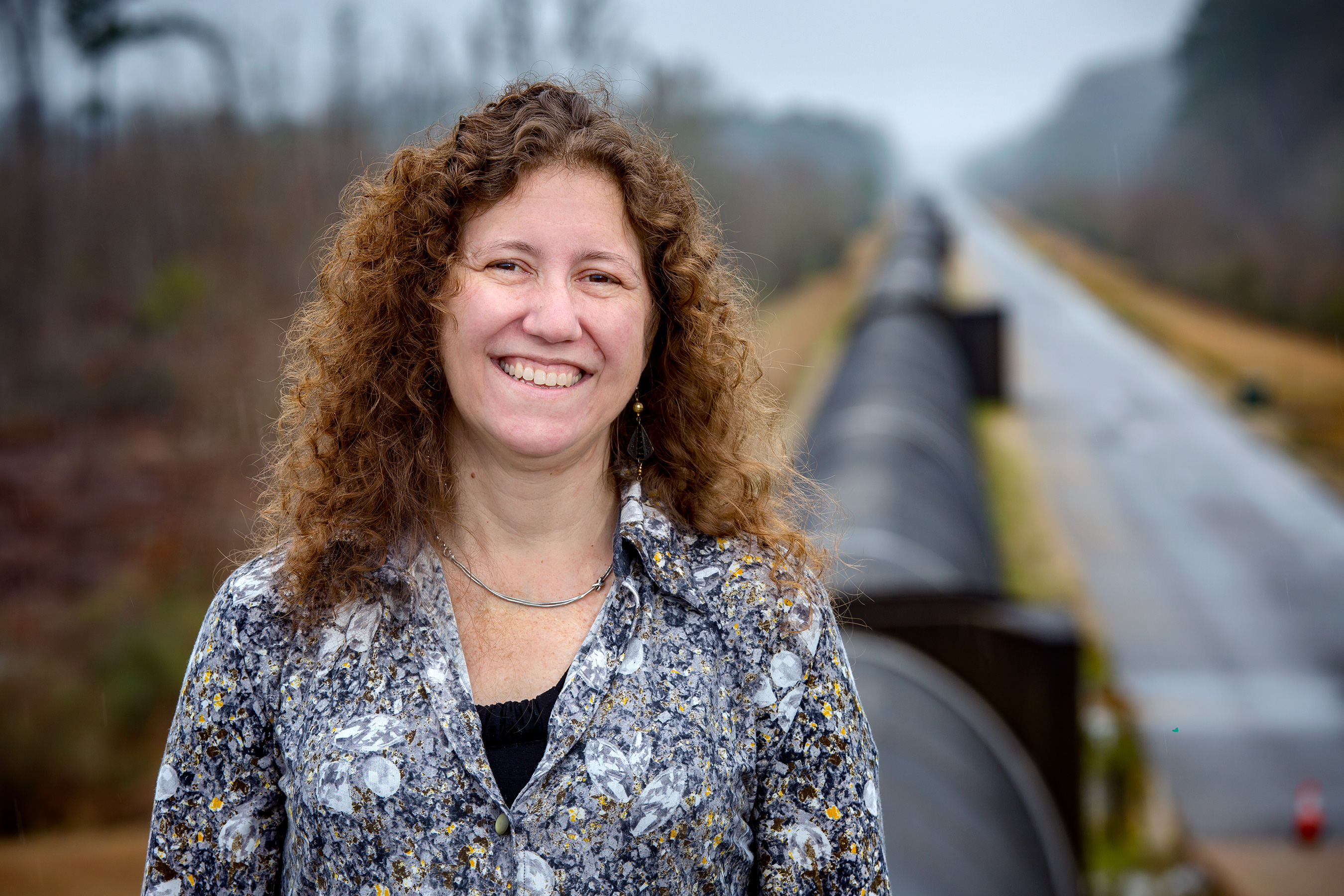Nature Names LSU Physicist Gabriela González Among Top 10 Scientists of the Year
BATON ROUGE – LSU Department of Physics & Astronomy Professor Gabriela González has been named one of the top 10 scientists in the world by the scientific journal Nature.
González serves as the spokesperson for the 1,000-member international LIGO Scientific Collaboration. LIGO, which stands for the Laser Interferometer Gravitational-wave Observatory, detected the gravitational waves in 2015 predicted by Albert Einstein’s Theory of General Relativity, and opened a new window of discovery to the cosmos.
In addition to being named among the world's top 10 scientists by Nature, González
was named Scientist of the Year by Great Minds in STEM, and one of the top 100 Leading Global Thinkers by Foreign Policy magazine for the LIGO Scientific Collaboration. She was also awarded the highest distinction
from the Senate of Argentina, the Honorable Domingo Faustino Sarmiento award. On behalf
of the LIGO Scientific Collaboration, she received the 2016 Breakthrough of the Year from Physics World for “their revolutionary, first ever direct observations of gravitational waves.”
González is an experimental physicist with LIGO and a professor in the LSU Department
of Physics and Astronomy. Her research involves the reduction of noise to enhance
the instrument’s sensitivity to detect potential gravitational waves, calibrate the
detectors and analyze data.
Years of research and hard work came to fruition with the detection of a single ripple in the fabric of space-time on Sept. 14, 2015. At 4:50:45 a.m., the LIGO Livingston Observatory in Livingston, La., detected a signal of a gravitational wave. Nearly 7 milliseconds later, another identical signal reached the LIGO Hanford facility in Hanford, Wash., confirming the signal and the presence of gravitational waves in the universe.

LSU's Gabriela González has been named one of the top 10 scientists in the world by
the scientific journal Nature, adding to an impressive list of accolades that include
Scientist of the Year by Great Minds in STEM, Breakthrough of the Year from Physics
World, and a top 100 Global Thinker by Foreign Policy magazine. LSU
This particular wave occurred as a result of two black holes colliding with each other nearly 1.3 billion years ago. In the final fraction of a second of the collision, a large amount of energy was emitted in the form of gravitational waves and spread out through the universe and reached Earth on that fateful September morning.
The signal depicted by data as a chirp is a symphony of opportunity for the evolving field of gravitational wave science. Not only did González and her collaborators confirm the general theory of relativity that Albert Einstein predicted a century ago, but they also have opened up countless opportunities for a new age of scientific discovery. In fact, this discovery is so groundbreaking, Einstein himself doubted scientists would ever be able to physically measure and record these waves. But, with their dedication and passion for understanding the universe, González and the LIGO scientists did just that.
“We know now that we are not only doing astronomy in a new way, but we are pushing the edge of the technology, and we are inspiring a new generation of scientists,” González said.
On Dec. 26, 2015, at 03:38:53 UTC, LIGO scientists observed gravitational waves – ripples in the fabric of spacetime – for the second time. During the merger, which occurred approximately 1.4 billion years ago, a quantity of energy roughly equivalent to the mass of the sun was converted into gravitational waves. The detected signal comes from the last 27 orbits of the black holes before their merger. Based on the arrival time of the signals—with the Livingston detector measuring the waves 1.1 milliseconds before the Hanford detector—the position of the source in the sky can be roughly determined.
González was born and raised in Córdoba, Argentina. She studied physics at the University of Córdoba, where she earned a Master of Science degree. She came to the U.S. to pursue and attain her Ph.D. from Syracuse University. Her doctorate focused on Brownian motion and gravitational waves. Her work took her to universities across the U.S. including MIT, Penn State and LSU. She has been the spokesperson for the LIGO Scientific Collaboration for the past five years.
Additional Links:
Gravitational Wave Science FAQ & Media Assets
Gravitational Waves Detected 100 Years After Einstein’s Prediction
Gravitational Waves Detected from Second Pair of Colliding Black Holes
LSU has a video uplink studio with live broadcast capabilities. Contact us to set up an interview.
Contact Alison Satake
LSU Media Relations
225-578-3870
[email protected]
or
Mimi LaValle
LSU Department of Physics and Astronomy
225-578-2261
[email protected]